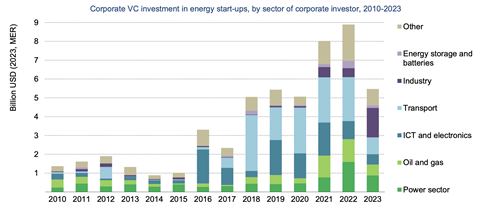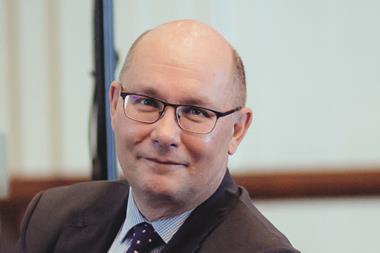It is more useful to think of climate change and decarbonisation as a ‘hyperobject’, says Iancu Daramus
“We must resist arbitrary, extremist targets. We live in the real world – and people die in our industry. But, due to unplanned pregnancies at some of our more remote mines, we may still be able to report net zero fatalities by the end of the quarter.”
No mining chief executive officer will ever say this, since we all agree that zero is the only acceptable number. Like safety, sustainability is also an ideal, yet one subject to increased scapegoating. Power-hungry bureaucrats said to be plotting grand top-down designs of social engineering in the name of a ‘net zero agenda’ that will only ‘make us all poorer’, with everything from gas bills and food costs to unemployment or trade imbalances laid at the feet of global green elites.
The thing is – there is no ‘net zero agenda’, in the sense of a unified ideology and political programme. Civil society is split between ‘de-growth’ and ‘green growth’; the energy sector has divergent views on the future energy mix (particularly around the role of natural gas, hydrogen and carbon capture); the Western policy push for decarbonisation and ‘reshoring’ means both more and fewer ‘made in China’ products.
It is more useful to think of climate change and decarbonisation as a ‘hyperobject’ – something undoubtedly real, but massively distributed across space and time, which cannot be easily pinned down, let alone reduced to a regulatory regime. We do not all have smartphones because Sillicon Valley shoved the ‘digital agenda’ down the throats of the public!
Yes, climate policies and regulation are an absolutely key driver and enabler of action; they should not be taken for granted. But they reflect bottom-up, as much as top-down, pressures: around 90% of the world’s population wants “intensified political action”, according to a major new global survey.
Most importantly, waves of innovation and investment are by now firmly established trends. You may not see it in the carbon levels in the atmosphere yet, but you can see it in capex numbers and R&D budgets around the world.
“Much of the real action lies at the intersection between energy, finance and industry, not in the arena of consumer choice where scaremongering tries to play”
Iancu Daramus, sustainable investment specialist
According to analysis by the International Energy Agency (IEA), the world is already investing twice as much in clean energy as it does in fossil fuels – three times as much in China, whilst emerging markets are allocating money roughly equally between ‘green’ and ‘brown’. Before anyone says ‘subsidies’ – the IEA has found that “three quarters of global energy investments today are funded from private and commercial sources”.
Even the oil and gas sector – otherwise a laggard in terms of green investments – is allocating its upstream capex “at the level projected in […] a scenario which shows coal, oil and natural gas demand levelling off or declining before 2030”. If no new policies are introduced, around half of the world’s oil and gas, and up to 80% of the world’s coal are still likely to not be used by 2040.
As they say, ‘the stone age did not end for lack of stones’.
Let’s zoom in on another indicator, namely, venture capital (VC) investments. Around 10% of VC and private equity money is now going towards climate tech, compared with less than 2% in 2013. For most of the decade that followed, climate venture funding had “three times the growth rate of VC investment into AI, during a time period renowned for its uptick in AI investments”.
This may no longer hold true in a post-ChatGPT era and, worryingly, overall cleantech VC investments are down over past two years, amid tougher conditions in private markets. Still, it speaks to established interest from hard-nosed entrepreneurs: the tech bros turned out to be cleantech bros!
Declines also reflect some signs of maturity: for example, lower VC interest for clean transportation reflects an EV battle which is now fought more by major automakers than by start-ups.

On the flipside, the chart shows a growing share is attracted by decarbonising industry. Consider a so-called ‘hard-to-abate’ sector – high-temperature industrial heat: in Europe, “78% of the energy demand is electrifiable with technologies that are already established, while 99% electrification can be achieved with the addition of technologies currently under development”.
And speaking of tech development – when the IEA first analysed how the world could cut carbon pollution to net zero by mid-century, almost half the technologies it modelled were early-stage – cue outrage about the ‘unrealistic net zero agenda’. Two years later, this had fallen to a bit more than a third.
Centralised decarbonisation policies are now triggering decentralisation; this genie cannot be bottled up again: “If it were considered as a standalone sector, the green economy would have been the second-best-performing industry” of the last 10 years, after tech.
That said, there are recurrent aspects in parts of ‘green’ discourse that I find dubious – notably the hostility to (nuclear) energy companies, and a certain technocratic disregard for considered ways of life.
To many people, ultra-processed ‘alternative proteins’ are still recognisably junk food; descriptions of cows as just an ‘inefficient way to make protein’ would probably not be recognisable to millions of farmers around the world. Yet the trope of the ‘greens coming for your burgers and your boilers’ is often exaggerated, since much of the real action, as I have tried to illustrate above, lies at the intersection between energy, finance and industry, not in the arena of consumer choice where scaremongering tries to play.
So join me – and let’s aim for net zero use of the ‘net zero agenda’!
Iancu Daramus is a sustainable investment specialist, currently working on a book about the myths of the energy transition, Green Herrings. He has held senior sustainability roles at Fulcrum Asset Management and Legal & General Investment Management, and is one of the authors of go-to qualification, the CFA Institute’s Certificate in ESG Investing. This is the latest instalment of a multi-part op-ed series for IPE.

































No comments yet